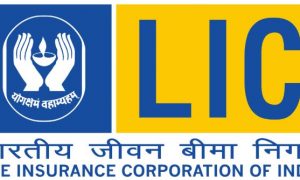There are a host of investments eligible for Section 80C benefits, which have already been discussed earlier. Today, since the market situation is different, we have a new perspective:
One, time period for savings for financial year 2019-20 has been extended till June 30, 2020, hence you have time to think. If you have not done it already, you can do your 80C investments now. If you have done already, you can invest for financial year 2020-21.
Two, the sharp market correction makes Equity Linked Savings Schemes (ELSS) funds available at a cheaper price.
ELSS proposition
The USP of ELSS, among the host of options under Section 80C, is that it offers the market upside. The other options -EPF, PPF, Post Office products, bank fixed seposits, etc.-are contractual return products, popularly referred to as guaranteed products. In insurance, ULIPs are market linked and endowment policies are somewhere in between, but more towards fixed income. That is, in ELSS, you get tax benefits as well as market-linked upside
Current situation
The market upside mentioned above, is not just undiluted upside, but subject to volatility. The market is going through one of the sharpest corrections ever. As of April 3, 2020, the average 3-year return from the basket of ELSS funds is negative (-) 5.5% per year (regular option, source AMFI). The 5-year return is -0.3% per year (regular option, source AMFI). To be noted, the 10-year average, even after the market correction, is 6.88% per year.
What do we observe from this?
One, if someone invested three years ago, with a horizon of three years, he would have got the tax benefit only. Even over the last five years, barring a few funds, returns are negative. The horizon for investment in equity should not be just three years. In ELSS funds, three years is the lock-in period, but horizon should be longer.
Two, it may sound like stating the obvious, and it has been stated many times in the recent past, returns as of today’s date is poor because prices are cheap, valuations are attractive. Hence, if you invest today, returns over the next three years / longer period would be better. As the punchline goes, past performance is not an indicator of the future.
Three, volatility is part of equity investments. If you want tax benefit, safety and stable returns, then you have to look at the contractual return avenues.
PPF for comparison
Taxation of PPF is exempt-exempt-exempt i.e. you get tax benefit when you invest, the interim payments, i.e. interest, is exempt and the final withdrawal also is exempt from tax. In ELSS, dividend payments and capital gains are taxable. PPF is safe, i.e. there is no default risk. The rate of interest is reviewed by the government every quarter, but any revision in interest rate would definitely not be as volatile as ELSS and would be more than bank deposit rates. The rate of interest in PPF, after the latest revision, is 7.1% from April 1, 2020, revised downwards from 7.9%.
Conclusion
If you want the market upside, benefit of current low prices and have appetite for volatility, you may invest in ELSS now in a staggered manner, e.g. SIP, because nobody knows the market bottom. If you want assured returns, then you have the benchmark of 7.1%. To be noted, PPF has an upper ceiling of deployment of Rs 1.5 lakh per year. In ELSS the limit for Section 80C is Rs 1.5 lakh per year but otherwise, there is no upper limit for investment.





































